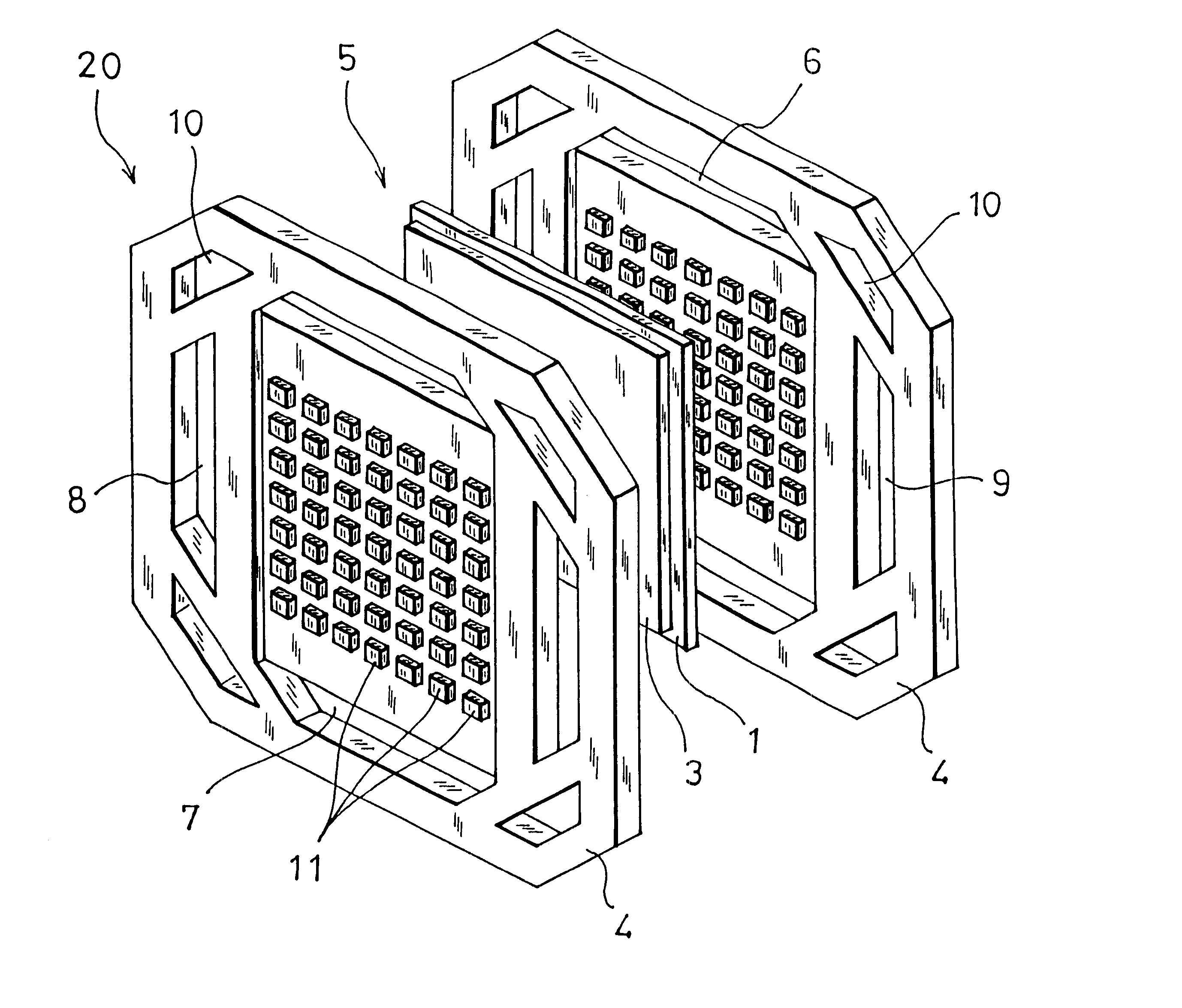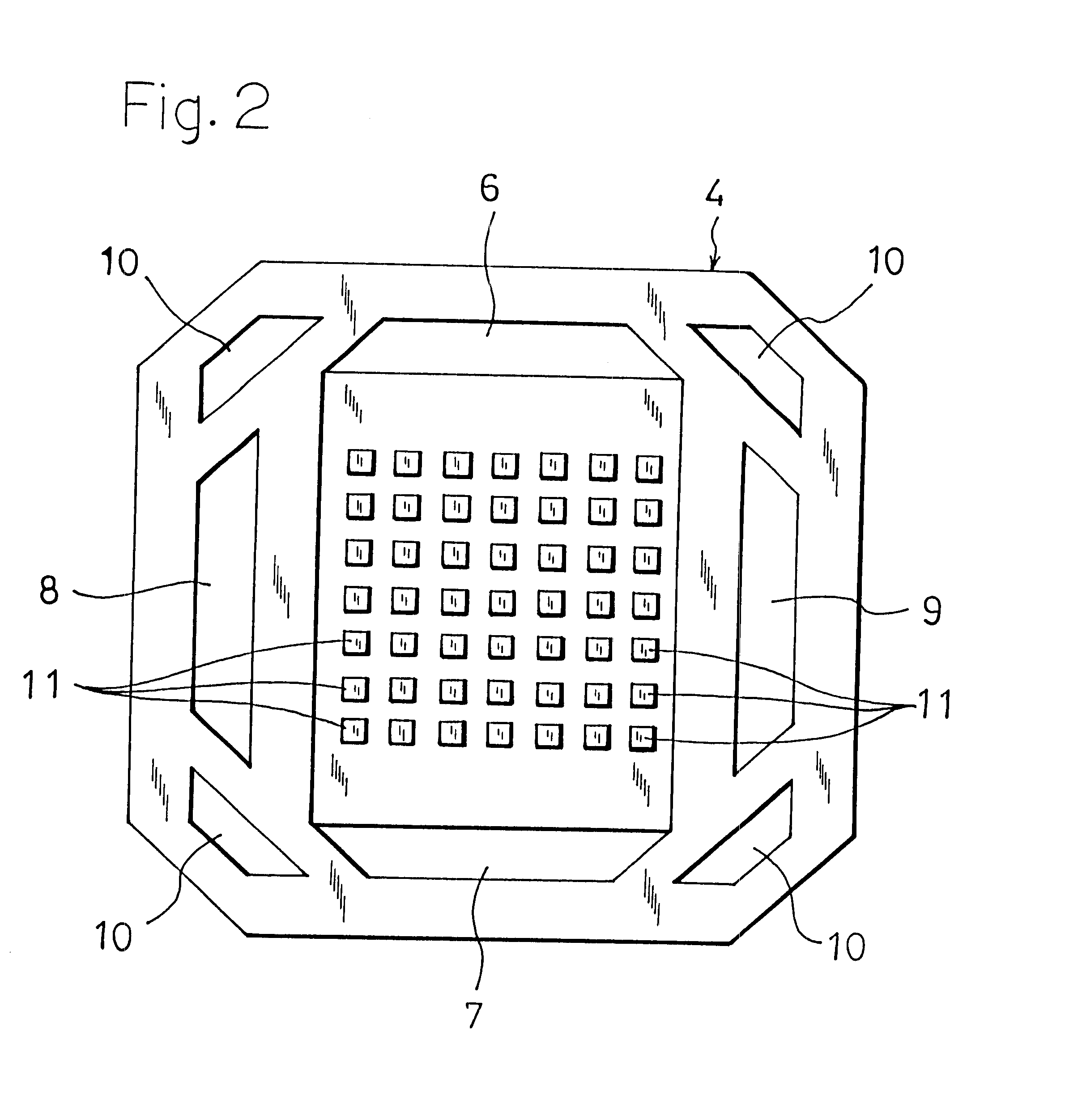Separator for a fuel cell
a fuel cell and separator technology, applied in the direction of cell components, final product manufacturing, sustainable manufacturing/processing, etc., can solve the problems of uneven molding, affecting moldability, and it is impossible to obtain a molded member (separator) which is correct in shap
- Summary
- Abstract
- Description
- Claims
- Application Information
AI Technical Summary
Benefits of technology
Problems solved by technology
Method used
Image
Examples
Embodiment Construction
Hereinafter, an embodiment of the invention will be described with reference to the accompanying drawings.
First, the configuration and the operation of a solid polymer electrolyte type fuel cell having the separator of the invention will be briefly described with reference to FIGS. 1 to 3.
The solid polymer electrolyte type fuel cell 20 has a stack structure in which plural unit cells 5 are stacked and collector plates (not shown) are respectively placed on both ends. Each of the unit cells 5 is configured by: an electrolyte membrane 1 which is an ion exchange membrane made of, for example, a fluororesin; an anode 2 and a cathode 3 which are formed by carbon cloth woven of carbon filaments, carbon paper, or carbon felt, and which sandwich the electrolyte membrane 1 to constitute a gas diffusion electrode having a sandwich structure; and separators 4 which sandwich the sandwich structure.
In each of the separators 4 on the sides, as shown in FIG. 2, fuel gas holes 6 and 7 for a fuel ga...
PUM
| Property | Measurement | Unit |
|---|---|---|
| thickness | aaaaa | aaaaa |
| thickness | aaaaa | aaaaa |
| elongation | aaaaa | aaaaa |
Abstract
Description
Claims
Application Information
 Login to View More
Login to View More - R&D
- Intellectual Property
- Life Sciences
- Materials
- Tech Scout
- Unparalleled Data Quality
- Higher Quality Content
- 60% Fewer Hallucinations
Browse by: Latest US Patents, China's latest patents, Technical Efficacy Thesaurus, Application Domain, Technology Topic, Popular Technical Reports.
© 2025 PatSnap. All rights reserved.Legal|Privacy policy|Modern Slavery Act Transparency Statement|Sitemap|About US| Contact US: help@patsnap.com



